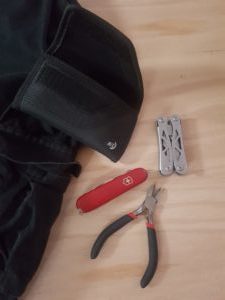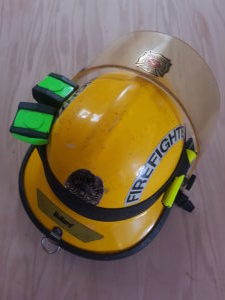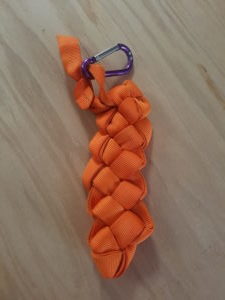
Mini Tools and Belt Case
This unit uses our most common resource, ‘The Fundamentals of Fire Fighting Skills’ (FFS), and we finally crack open ‘Fire Service Pump Operator Principles and Practice’ (PO) for some examples and a little bit of discussion. There is also one useful section in ‘Barron’s: Firefighter Exams.’ (BARRONS) These books and other helpful resources are discussed in more detail on the Orientation Page, while the Fire Fighting Skills Homepage also outlines (with links as we go along) each of the units we will cover if you want more information.
Here is a list of the skills and learning goals for this unit, along with the page numbers for each. Tools and Equipment:
- An introduction to the safety, conditions, and effective use of tools; FFS pages 236-7
- Discuss the different functions of tools and learn about the most commons types that perform each function; FFS pages 237-48, BARRONS pages 213-225:
- Rotating Tools
- Pushing/Pulling Tools
- Prying/Spreading Tools
- Striking Tools
- Cutting Tools
- Multiple Function and Special-Use Tools
- Read and/or discuss how these tools are used in various phases of a Response;* FFS Pages 248-52:
- Scene Size-Up
- Forcible Entry
- Interior Firefighting
- Search and Rescue
- Rapid Intervention
- Ventilation
- Overhaul
- Discuss Tool Staging; FFS page 252
- Discuss Proper Care of Tools and Equipment; FFS page 252-53
- Look over Tables 2-1 through 2-10 and discuss the different types of tools required for each type of apparatus; PO pages 21-29
- REVIEW: Barron’s Firefighter Exams: 6th Edition:
- There are a lot of these pages, but the next unit, Robes and Knots, doesn’t have any tests so you could easily spread these out between the two, or just pick and choose which ones you want to do. Perhaps just chapter 10? They are much faster to go through than this list makes them appear: Pages 119-21, 160-2, 183-4, 190-1, 226-236, 313b, 314b, 347-8, 371-73, 424-5, 454-58
*NOTE: Each of these 7 topics have their own units that will surely cover the tools and equipment used. You can choose to read through these few pages (basically just 3) as an introduction or skip it for later when you’ll go into more detail with each specific unit.
Hands-On, Project, and Field Trip Ideas:
- Visit a hardware store to check out each type of tool.
- Visit a Fire Station to check out the tools on each apparatus.
- Ask the Fire Fighters to show what they keep in their pockets*, on their helmets, and in their personal bag on the apparatus.
- You can also YouTube ‘Fire Fighter Pocket Tools.’
- YouTube how Halligan Tools can be used.
- Visit a Fire and Safety Specialty Shop if there is one in your area.
- Have your child put together their own tool box for everyday life.
- Purchase a few cheap fire fighter specific tools to practice with such as Door Wedges
or a Helmet Rubber Band
and flashlight. (Also see note on webbing below.)
- Get a multi tool or pocket knife and learn how to use it safely.
- Make a PVC or Wooden Pike Pole or Halligan Tool. (This might take some creativity or whittling.)
- Practice Blind Rescues: Blindfolded use a few basic tools, like door wedges and your fake Halligan tool, to find a victim (your plastic skeleton if you have one) who is trapped in your house.
*NOTE: This can be a good time to introduce Webbing, and you can purchase cheap, cut-by-the-foot, strapping at a hardware store for use. Tying or rolling the webbing can fit-in quite nicely with the next unit on Ropes and Knots. You can YouTube how to use them. Here are a few videos I really like: Tying Webbing, Webbing Drags and Carries, Victim Hasty Harness.
So how did it go for us?!

Helmet with band, door chalks, and flashlight.
Tools are pretty straight forward, and if you are any bit of a do-it-yourselfer than you and your child[ren] probably already have a pretty good understanding about how they work. It has been interesting, however, to learn about a few specific tools that are unique to fighting fires, as well as the way firefighters use ordinary tools in unordinary ways.
As for Nathan’s tool collection, he had been given a hand-me-down pocket knife from his Grandpa last summer, so we had already started learning about using tools safely. For Christmas we expanded his firefighting equipment to include a helmet band and some fancy chocks, and he was given a stream light flashlight by another Grandpa. Then, when his birthday rolled around late in the winter, we replaced his worn-out belt case with a new, slightly larger one, and added a couple other mini versions of common pocket tools. They have been just the right size for a pint-sized firefighter.

Webbing tied in a Lobster Tail
We, of-course, visited our local Lowe’s to check out all of the hand tools, hammers, axes, and saws, and also the electric circular and reciprocating saws that are similar to the ones firefighters use for ventilation and overhaul.
Our biggest event of the unit was getting an invitation to another Anchorage Station, number 12, that just happens to be the hand tool maintenance station for the Department. We got to see all of the axes, halligan tools, and pike pokes firefighters use. We got to play with a thermal imager, and even got to see where they make all the chainsaw chains! It was very cool, and we made a short video about it:


Post a comment